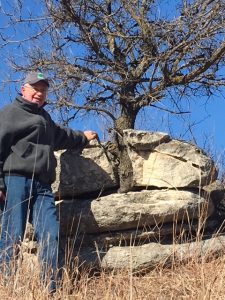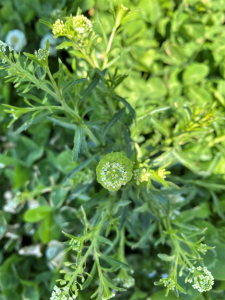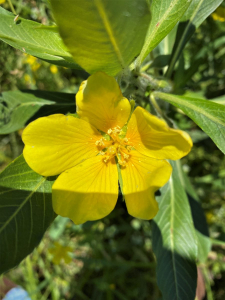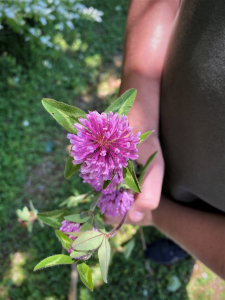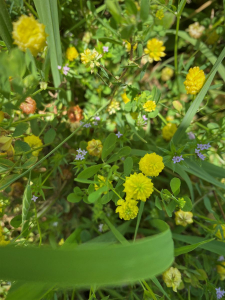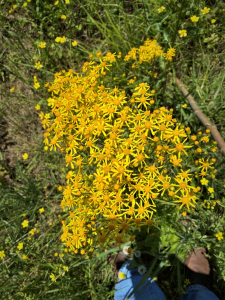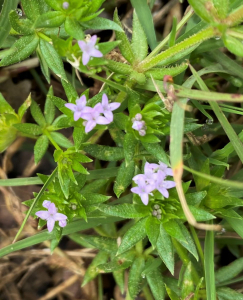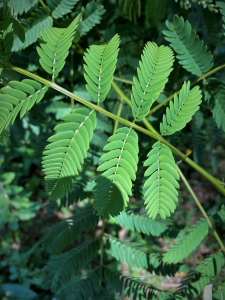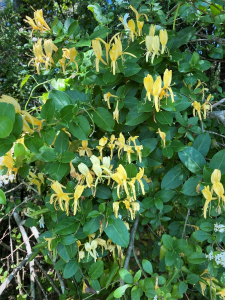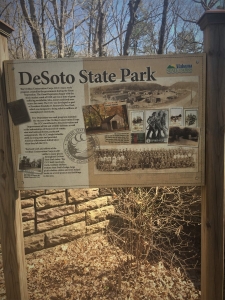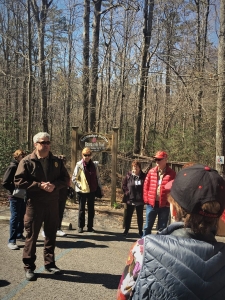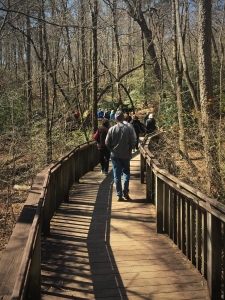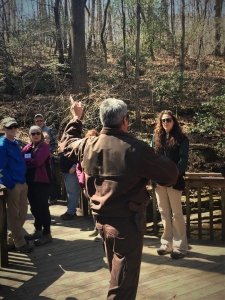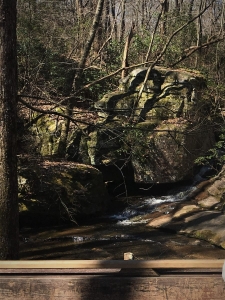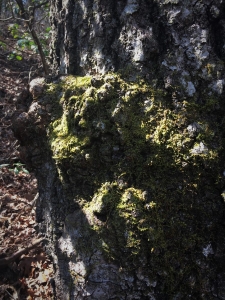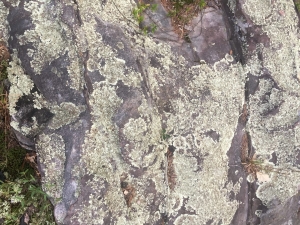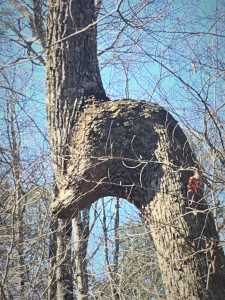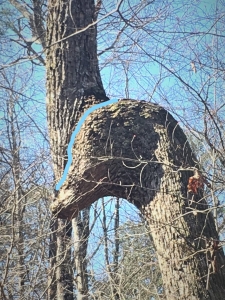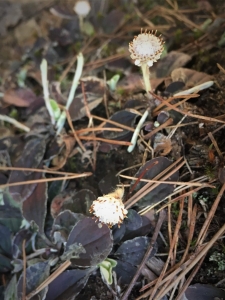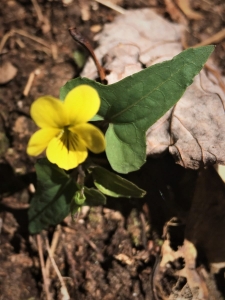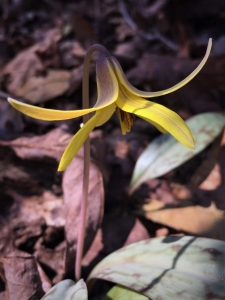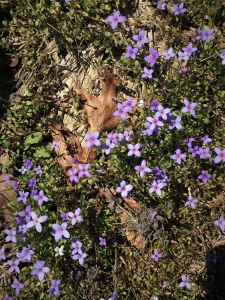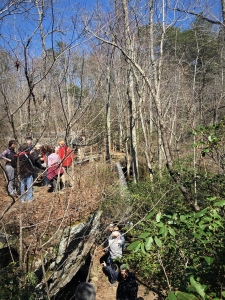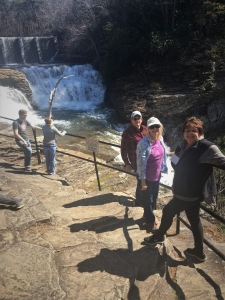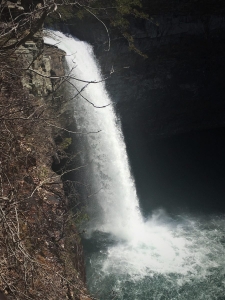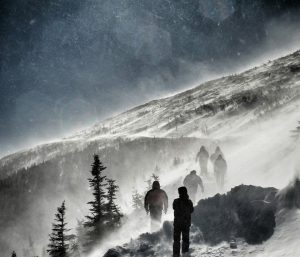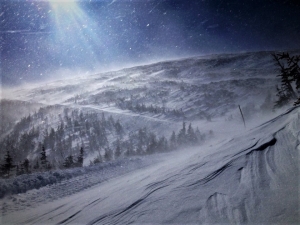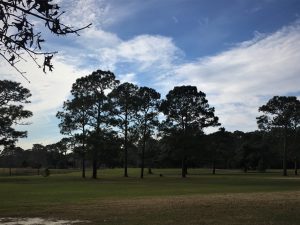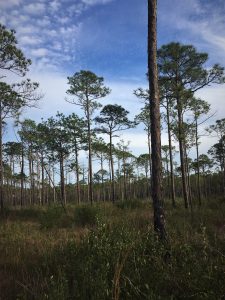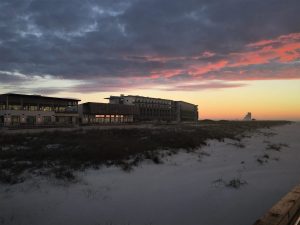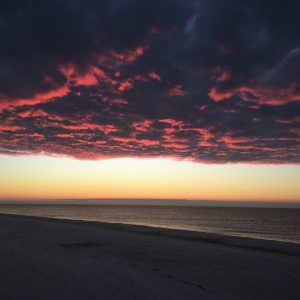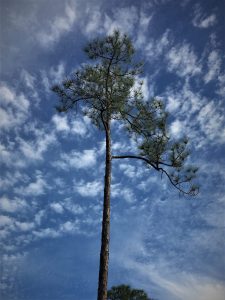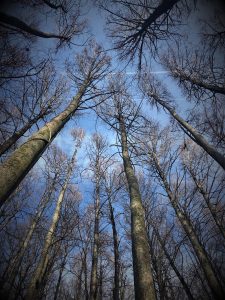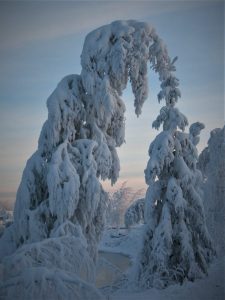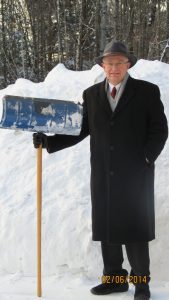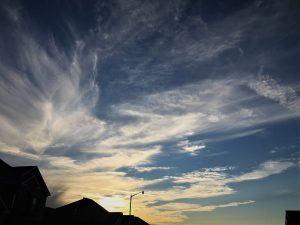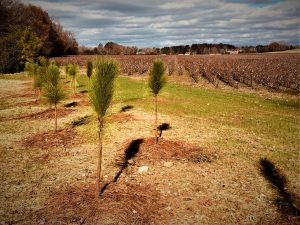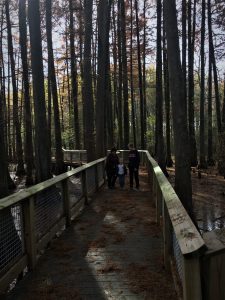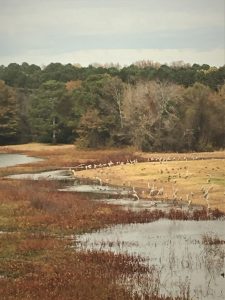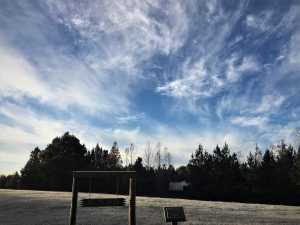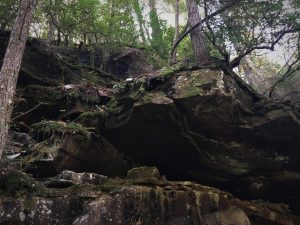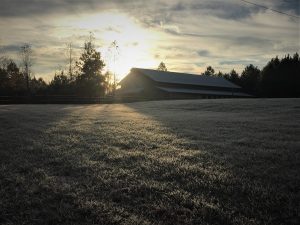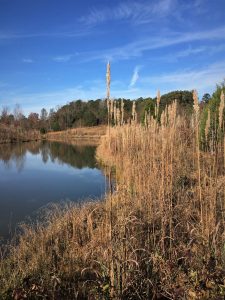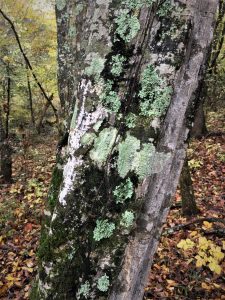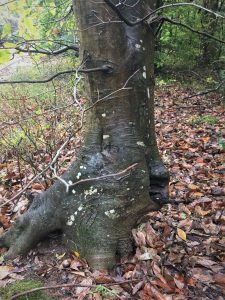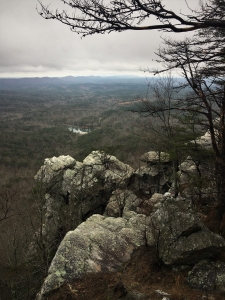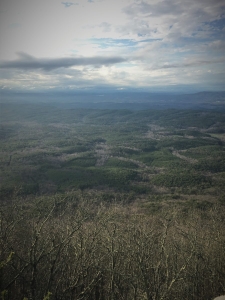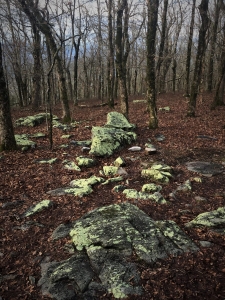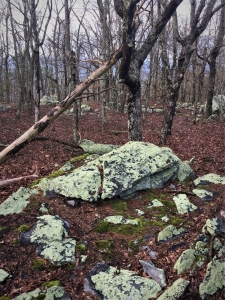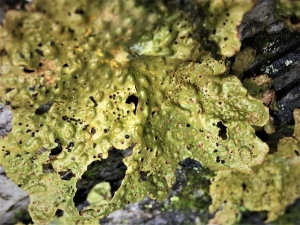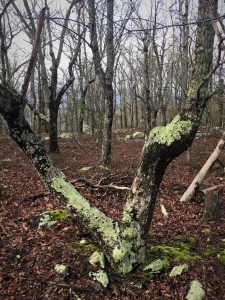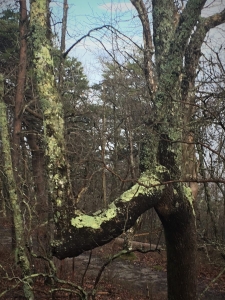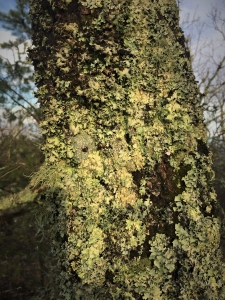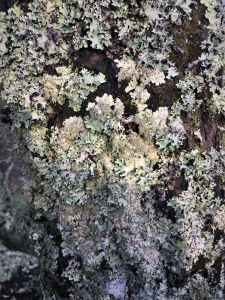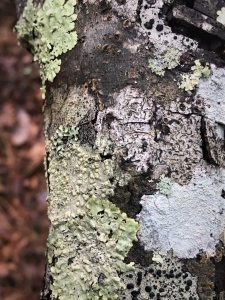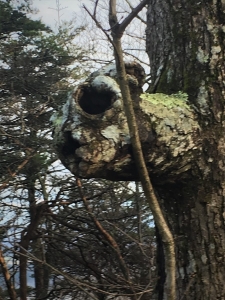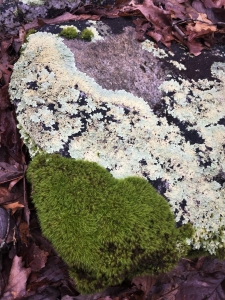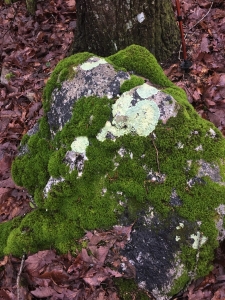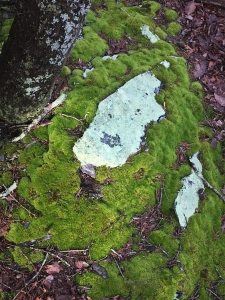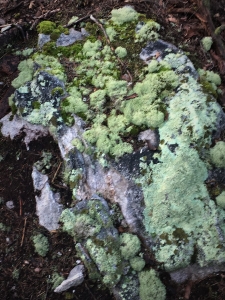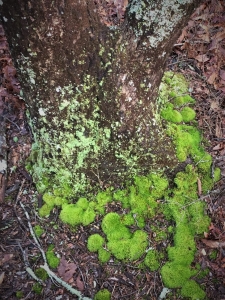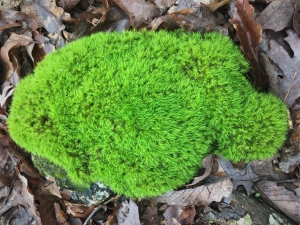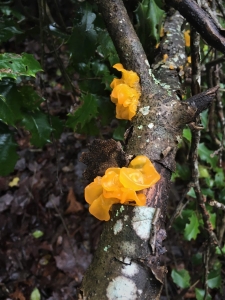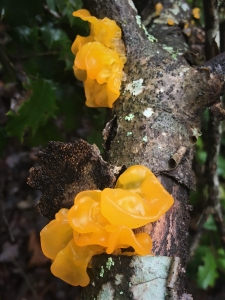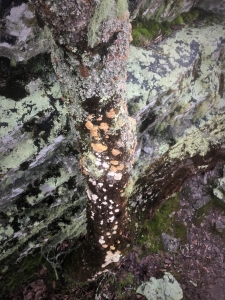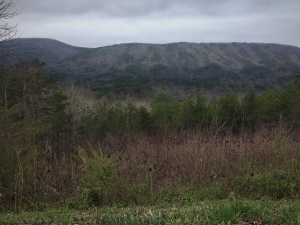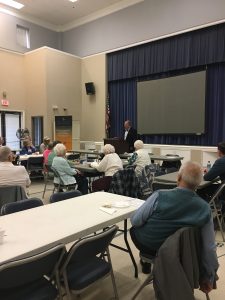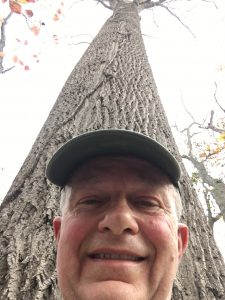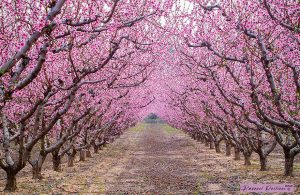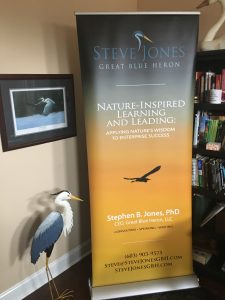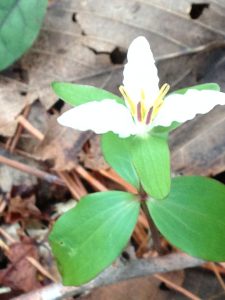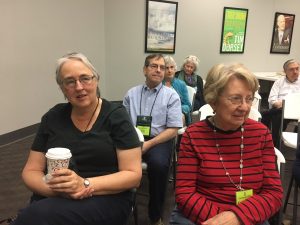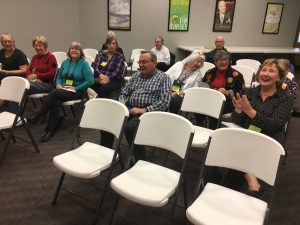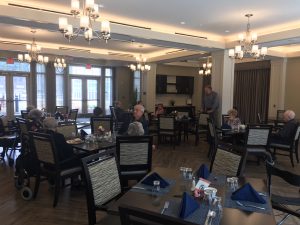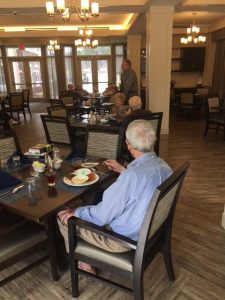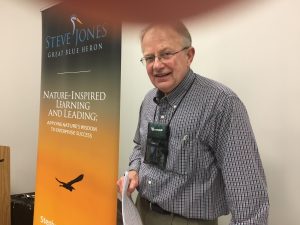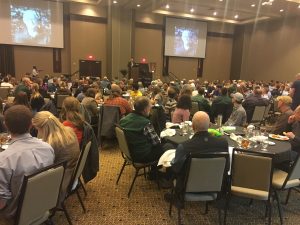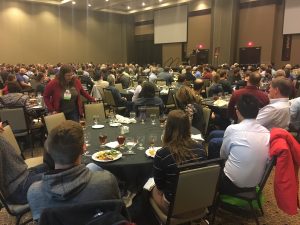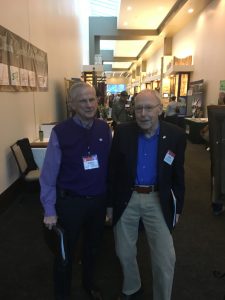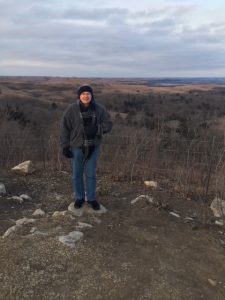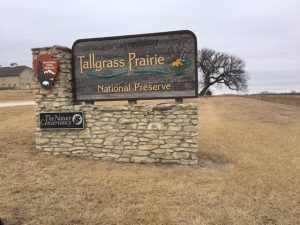My early February trip to Manhattan, Kansas and the 11th Annual Kansas Natural Resources Professionals Conference provided a lot of fuel for my Great Blue Heron and Facebook posts. I presented the Thursday keynote address to the >300 attendees and on Friday conducted a concurrent session for 50 or so: “Harnessing Nature’s Wisdom and Inspiration through the Power of Stories.”
I began the session with a simple statement. Every enterprise, whether university or multi-national corporation, or even a parcel of land, comprises a series of stories. My own experience with family forests suggests that many owners embrace a deep passion for the land. This emotion infuses owners whose tenure reaches back multiple generations, as well as new owners whose stewardship will extend forward to children, grandchildren, and beyond.
I offered my own perspective on the relationship among land owners, professional natural resources stewards, and the land itself. The relationship is fundamentally spiritual – land is sacred. Ownership is a privilege and honor, one that carries an obligation, driven by a stewardship ethic. Aldo Leopold wrote, “We can only be ethical in relation to something we can see, understand, feel, love, or otherwise have faith in.”
What is the relevance to Kansas NR Professionals? I answered, “You advise (work with/educate/inspire) those who own the land.” I spent nine years as Forestry Extension Faculty at Penn State University, focusing on research and informal education dealing with family forest owners, loggers, and the forest products industry. More than one-half million Pennsylvania families own forestland. Ninety-five percent of Kansas’ 5.2 million acres of forests is privately owned… by 117,000 families. Owners are more sophisticated than ever, and more educated. They embrace a land ethic, even if not consciously thinking about it as such. I made clear that our role (their role) is to deepen that embrace; to inspire, educate, and develop that ethic; and to encourage and assist the translation of that unspoken ethic to practice.
Aldo Leopold said (A Sand County Almanac), “There are two spiritual dangers in not owning a farm. One is the danger of supposing that breakfast comes from the grocery, and the other that heat comes from the furnace.” We Humans are fully dependent upon Nature!
Our Obligation — Clear and Emphatic
I’ve learned that many writers, philosophers, clergy, and others have already articulated, some centuries ago, what I am now embracing and writing. Among modern writers, Wendell Berry expresses so clearly my own beliefs: “Outdoors we are confronted everywhere with wonders; we see that the miraculous is not extraordinary, but the common mode of existence. It is our daily bread.”
Louis Bromfield, a mid-twentieth century novelist and playwright, published some thirty books, each one a best-seller. Several evolved into Hollywood movies, yet Bromfield chose to devote his life to rehabilitating the “old worn out Ohio farm” he purchased in the 1930s. He wrote of his mission in his non-fiction Pleasant Valley: “The adventure at Malabar is by no means finished… The land came to us out of eternity and when the youngest of us associated with it dies, it will still be here. The best we can hope to do is to leave the mark of our fleeting existence upon it, to die knowing that we have changed a small corner of this Earth for the better by wisdom, knowledge, and hard work.” Isn’t that what all of us should strive to achieve? To change some small corner of this Earth for the better?
Leonardo da Vinci asked some 500 years ago: “What induces you, oh man, to depart from your home in town, to leave parents and friends, and go to the countryside over mountains and valleys, if it is not for the beauty of the world of nature?” I see deep and abiding beauty everywhere I seek it.
And consider the ancient American Indian proverb:
“Treat the Earth well.
We do not inherit the Earth from our Ancestors,
we borrow it from our Children.”
Wisdom is timeless. Too bad that such common sense and basic precepts are so uncommon. Our obligation to steward this Earth could not be more clear and emphatic.
These Are Changing Times (Yet Aren’t They All?!)
I earned my forestry bachelors degree in May 1973. I took a forest management course my junior year. I recall the subject matter being presented in a manner cold, sterile, and antiseptic. Deeply objective, without passion. The textbook (Forest Management, Davis, 1966) defined the topic as “The application of business methods and technical forestry principles to the operation of a forested property.”
The working definition employed in 2010, had not strayed far, still objective, cold, and appropriately science-based. Management Plan (American Tree Farm System): “Document that guides actions… modified in response to feedback and changed conditions, goals, objectives and policies. Management plans may incorporate several documents including, but not limited to, harvest plans, activity implementation schedules, permits, research, etc.”
I admit, too, that my own perspective early in my career did not attempt to break free from the strict science viewpoint. I leaned toward forest management driven by the head, free from the encumbrances of heart, spirit, soul. I look back now with incredulity. How could I have been so blind? I have learned slowly, inexorably, that landowners CARE. They have a loving embrace… a near-sacred relationship to their land. They shamelessly express deep sentiment, passion, appreciation, and humility. For most, land ownership is both honor and privilege, an attachment of emotion. They engage heart, spirit, and soul. Aldo Leopold spoke of love and respect for the land: “When we see land s a community to which we belong, we may begin to use it with love and respect.”
Wild Land Legacy Stories
All that begs the question. How can we bridge the gap between our sterile natural resources professional training and predilection… and landowners’ passion for the land? My answer is simple: Wild Land Legacy Stories. I am convinced that landowners’ wild lands, whether forest, prairie, nature center, or commercial pecan grove, are special places. Sacred refuges to escape, embrace, relish, and, yes, perhaps even generate supplemental income. Every property is a legacy: an expression of a land ethic; an important thread in the fabric of a family; a pledge to the future; a portfolio of memories; an ownership statement from the heart, soul, and spirit!
A Wild Land Legacy Story serves as an addendum to a professional management plan, the land’s Nature dimension. The complementary Legacy Story serves as an expression of the land’s Human Nature dimension. Consider certain long-accepted and practiced corollaries: family photo albums; old letters; genealogy; the family Bible.
The Wild Land Legacy Story records and memorializes the Human Nature: detailed ownership history; beyond dates and details; emerging ownership philosophy (I’m working with a fourth-generation owner on a Tennessee property). Ownership philosophy evolves, and will continue to do so. So, what do we include in the Legacy Story? First, we consider whether we should establish a website. A Legacy Story then becomes a living account, accessible 24/7 by the owners, family, friends, and other followers. This is the digital age, which makes updating a Legacy Story, even without a website, easy and keeps the document vibrant. That means we can incorporate lots of photos — current and historical. I recommend establishing permanent photo-points, identified for locating convenience by GPS coordinates. Repeat the photos by season every five years or so, always oriented to the same direction. How many is enough? The answer varies with size of property, diversity of stands and special features, and many other factors that are site- and owner-specific.
Trail camera technology and equipment costs are rapidly evolving, with quality and ease of use increasing as expense declines — a perfect combination. Another digital evolution involves drone video documentation, again seasonally and periodically. I recall from my industrial forester days using both fixed-wing and helicopter reconnaissance for special project assessment. Advancing drone technology allows far-less-expensive aerial examination, albeit for me not nearly as satisfying as actually being airborne!
Reading the land accents the Legacy Story. Second-growth northern hardwoods dominated our four-acre property in New Hampshire. Intrepid Europeans settlers domesticated the land in the 19th century, clearing the forest, unceasingly carrying and stacking field and pasture stones, building the ubiquitous signature stone fences that now crisscross woodlots throughout southern New England. Hundreds of feet of such walls partitioned our small parcel, telling the tale of clearing, pasturing, and abandonment. Nature does indeed abhor a vacuum. Our forest reclaimed the attempted domestication in two waves. The first probably 80-90 years ago. The second 40-50, judging by the relative tree size and age. Some old fence-row sentinels (beech, sugar maple, and white birch) appear to be at least 150 years old, serving witness to the land’s story. My Land Legacy Stories read and interpret the natural and human history written into the existing cover.
Reading the land entails naturalist detective work. Telltale signs and evidence include stumps, hummocks and hollows, aerial photos (some date back five decades and longer), and family photos taken on-site. My objective is to read the land and tell the tale. The evidence fades a little every year.
Self-publishing is another development easing effectively telling the tale. Numerous firms compete to package any such story into a permanent record, memorializing the story and the evidence in high quality book form. We can publish the first volume now, maintain an evolving digital or web presence, and seek to publish a permanent hard copy update periodically — perhaps every 5-10 years.
So, when is the completion date… when does the project end? My advice is to think forever – a legacy lives on through generations yet to come. A formal management plan operates in fixed increments. I have said often over my career that people don’t care how much you know… until they know how much you care! A traditional Management Plan tells what we professional natural resources managers know. Wild Land Legacy Stories tell how much we CARE! And chronicle how much the landowner CARES! Again, objective, science-based management can and must be an essential planning component, yet the purpose, passion, and emotion are what extends through generations. Landowners CARE!
Quotes for Amplification
Wendell Berry proclaimed, “The care of Earth is our most ancient and most worthy, and after all, our most pleasing responsibility. To cherish what remains of it and to foster its renewal is our only hope.” Always absolute and succinct in his relevant observations, Aldo Leopold mused, “The land ethic simply enlarges the boundaries of the community to include soils, waters, plants, and animals, or collectively: the land… In short, a land ethic changes the role of Homo sapiens from conqueror of the land-community to plain member and citizen of it. It implies respect for his fellow-members, and also respect for the community as such.”
I add an excerpt from a Land Legacy Story prospectus I recently prepared: “Every enterprise, whether university or multi-national corporation, or even a parcel of land, comprises a series of stories. My own experience with family forests suggests that many owners embrace a deep passion for the land. This emotion infuses owners whose tenure reaches back multiple generations, as well as new owners whose stewardship will extend forward to children, grandchildren, and beyond.”
Through these past few years of my professional natural resources endeavors, I have weaved my belief that that every lesson for living, learning, serving, and leading is either written indelibly in or is compellingly inspired by Nature. How are you, or how might you, harness Nature’s power and wisdom?
Conclusion
Natural resources professionals, whether in Kansas or Kalamazoo or Klamath Falls, share an obligation to sow the seeds of Earth stewardship… to inform, educate, and inspire a land ethic deeply in those who own or are charged with responsibility for some small corner of forest, prairie, range-land, wetland, river, or other wild landscape. Creating Wild Land Legacy Stories is one vehicle for assuring multi-generational stewardship. We have only this one chance to get it right. We must employ every tool at our disposal. I will do my part; you do yours. We cannot simply try to do it. As my favorite philosopher, Yoda The Jedi Master, made clear, “Do. Or do not. There is no try.”
